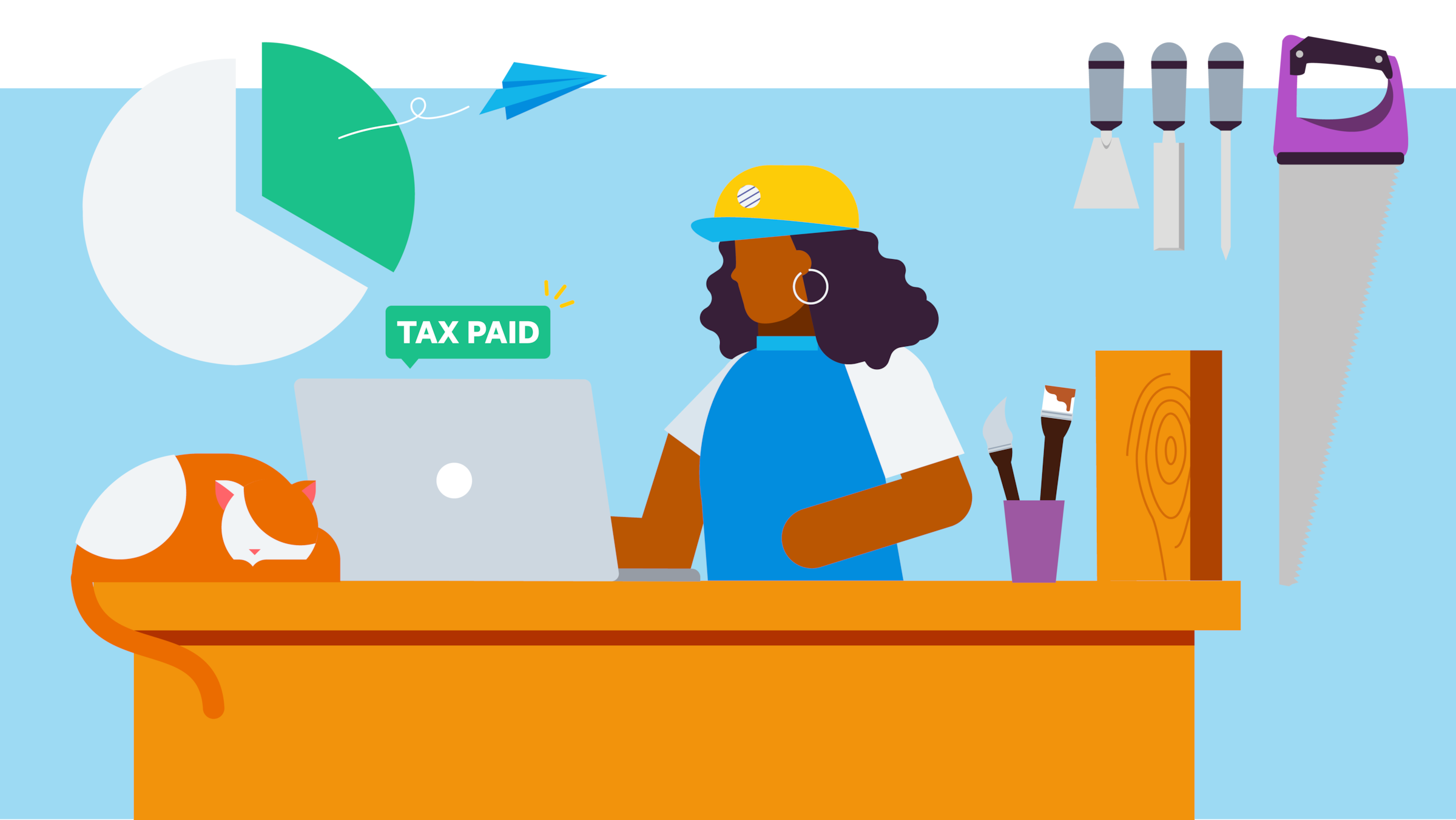A comprehensive guide to GST/HST/PST returns for small businesses
Learn how to register with the CRA for GST/HST/PST so you can file your business income taxes correctly.

Published Thursday 23 November 2023
Each year, many small businesses file their GST, HST and/or PST returns with the Canada Revenue Agency (CRA).
Learn about these taxes, how to register to collect them, and the information you need to complete your returns report.
What are GST, HST and PST?
GST, PST and HST are “consumption taxes” – they are charged at the point of sale and are based on the amount a buyer consumes or buys, rather than on income or profits. The more that is bought, the more tax is charged.
There are several sales taxes levied in Canada at federal and provincial levels.
Federal sales tax
Goods and services tax (GST) is a 5% tax that applies to most goods and services sold in Canada.
Provincial sales tax (PST)
The PST is a retail goods and services tax collected in some provinces. It is a provincial tax, which means each province that chooses not to be part of the HST program (see below) sets its own rate and taxable items:
- British Columbia has a 7% PST.
- Saskatchewan’s PST is at 6%.
- Quebec’s version, the Quebec Sales Tax (QST), is 9.975%.
- Manitoba has an 8% Retail Sales Tax (RST).
In provinces with PST, consumers pay PST as well as the GST.
Combined federal and provincial sales tax
Harmonized Sales Tax (HST) combines the federal GST (5%) and a provincial sales tax set by the province. It applies in most provinces and territories but at different rates.
Does your small business have to collect these taxes?
Businesses that charge GST, HST or PST are said to “collect” it – they charge the appropriate amount and forward it to the government.
Your business may have to collect these taxes, depending on how much money your business makes, the types of goods and services you sell, and whether the buyer is exempt.
Businesses that make $30,000 in revenue over a tax year, including self-employed businesses, must register to collect GST/HST/PST. Businesses that make less than $30,000 in revenue over a tax year can choose to register, but are not required to.
The CRA has three categories of goods and services to help small businesses understand how much GST to charge:
- Taxable: GST, HST and PST have to be charged, collected and remitted. Businesses can claim Input/Tax Credits (ITCs – credits given on taxes a business pays to make or sell taxable goods or services).
- Zero-rated: The item is taxable, but at a rate of 0% (zero). The sales taxes are not charged, collected or remitted. Businesses can claim ITCs if they paid GST on expenses that relate to making or selling zero-rated items.
- Exempt: These sales taxes aren’t collected, and businesses cannot claim ITCs.
Register for GST
Register through the Business Registration Online program. Once you’re registered, you are given a nine-digit business number ending with the suffix "RT." You are now responsible for charging and collecting GST/HST, and will need to file returns.
To monitor your payments and stay up to date with any changes from the CRA, you can create a My Business Account with the CRA to monitor your payments and sales tax details. This will allow you to stay up to date. You can also do this via Netfile.
Filing the GST/HST/PST return report and paying your tax
Small businesses file their GST/HST/PST return reports as part of their tax return.
Businesses can file their reports electronically (which the CRA prefers), via Telefile or on paper. Businesses should check whether they are required to file electronically.
Here’s an example of a GST/HST return form. The CRA publishes instructions for completing your return.
When is your return due?
This depends on your reporting period and the amount of revenue you’ve earned. The more you earn, the sooner you need to report and pay it. For some provinces, you need to file a return for PST on different reporting cycles.
- Monthly: The filing and payment deadline is 1 month after the end of the reporting period.
- Quarterly: The filing and payment deadline is 1 month after the end of the reporting period.
- Annually (except those with December 31 tax year end): The filing and payment deadline is 3 months after the end of the reporting period.
- Annually (December 31 tax year end): The filing date is June 15. Payment date is April 30.
H3: Paying your GST/HST
There are several ways to forward your collected taxes to the CRA:
- Set up a My Business Account with the CRA and pay through the portal.
- Set up online banking through a business bank account to pay GST/HST/PST.
- Mail a cheque payable to the “Receiver General for Canada.”
- Pay in person at a bank or other financial institution.
The CRA may charge you for late filing of your returns. Here’s the CRA’s information on late-filing penalties.
Provincial GST/HST/PST requirements
Provinces that don’t use HST have their own reporting requirements for PST – you’ll need to register with them to collect PST and make payments. The CRA has more information on local tax rates and regulations.
Check with the local regulators or ask your accountant for more information.
Disclaimer
Xero does not provide accounting, tax, business or legal advice. This guide has been provided for information purposes only. You should consult your own professional advisors for advice directly relating to your business or before taking action in relation to any of the content provided.
Start using Xero for free
Access Xero features for 30 days, then decide which plan best suits your business.